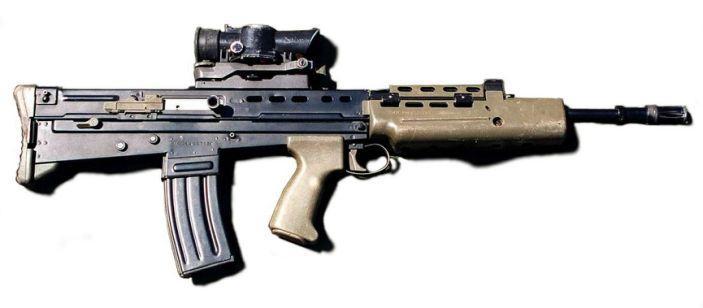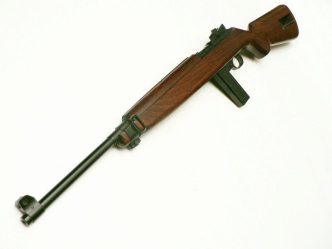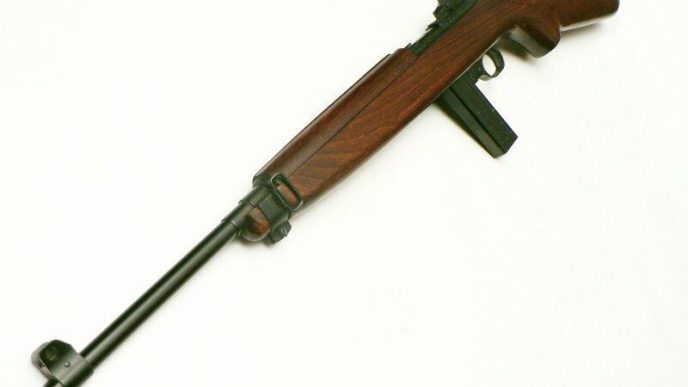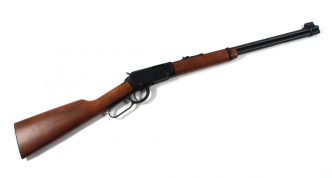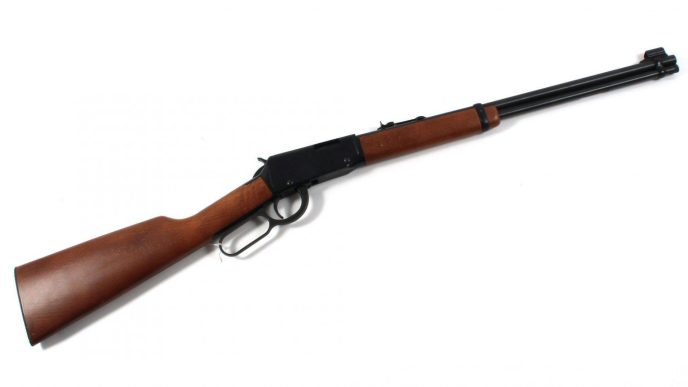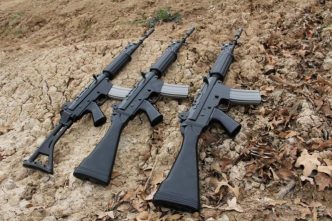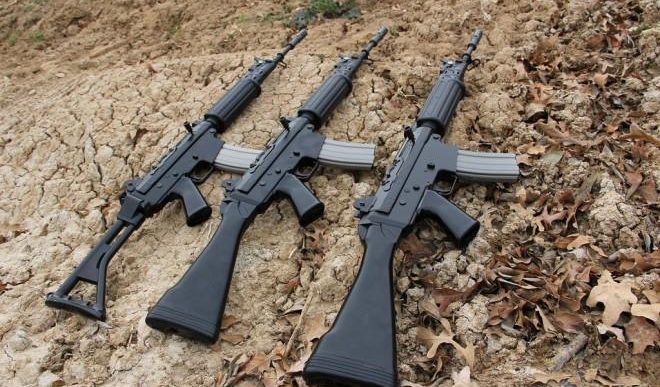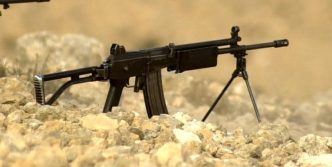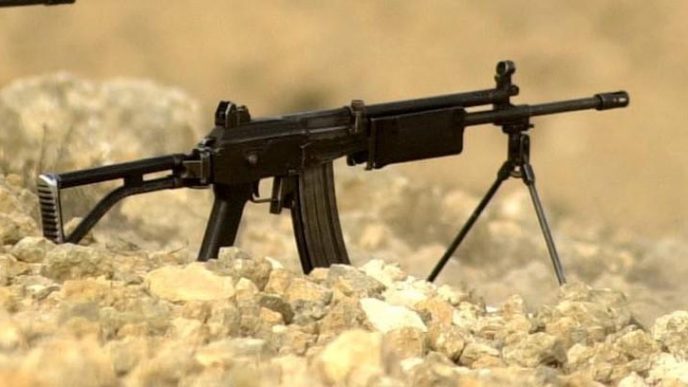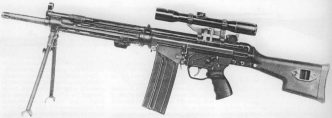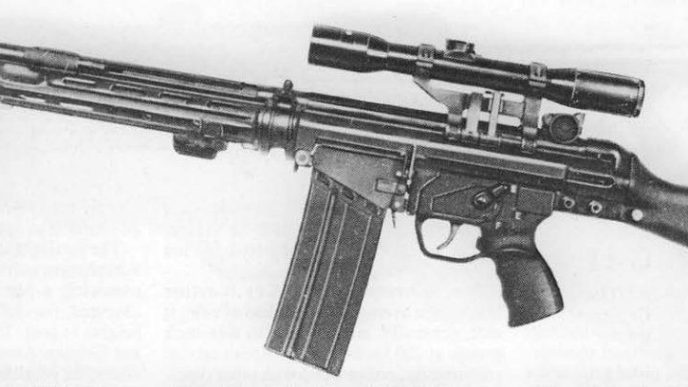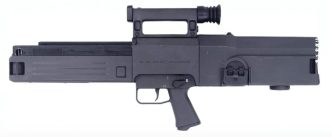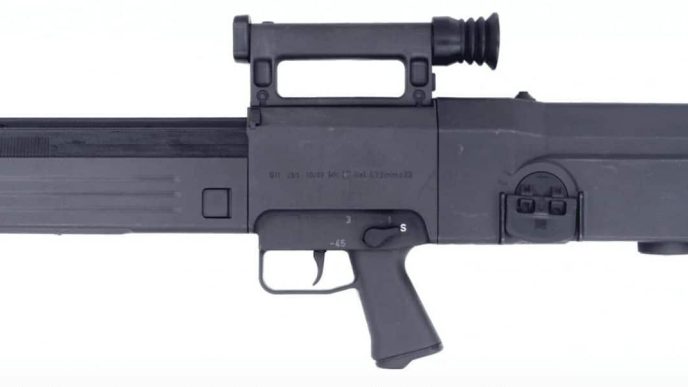The Enfield L85A1 assault rifle is part of the British SA80 family of 5.56×45mm NATO bullpups. The L85A1 rifle variant has been the standard-issue service rifle of the British Armed Forces since 1987, replacing the Enfield L1A1 variant of the FN FAL. The SA80 family originally consisted of:
- L85A1 Rifle,
- L86A1 Light Support Weapon (LSW)
- L98A1 Cadet GP Rifle
The first SA80 batch of weapons was issued in October 1985.
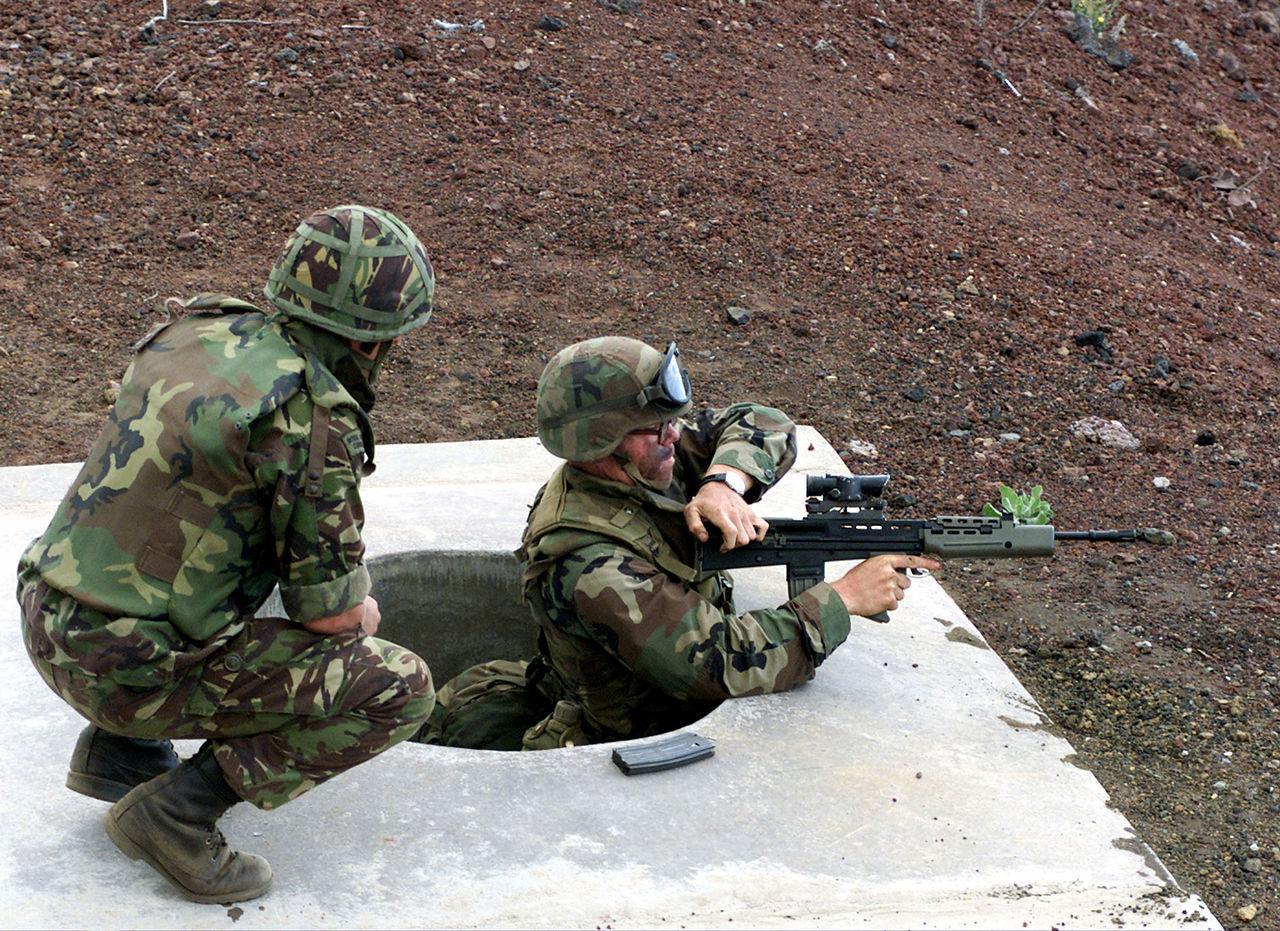
Introduction
The British Army began looking for an automatic rifle in about 1910, but the research program was interrupted several times, and it was not until 1950 that a design was finally approved. Just as it was about to go into production, though, the politicians got into the act, and the design was dropped in favor of the Belgian FN FAL and the 7.62 mm NATO cartridge.
When this rifle became outdated, Enfield began designing once more, this time with a new cartridge of 4.85 mm caliber, ready for the 1978 NATO small arms trials. Their 1950 model, the EM1, had been dropped because it could not be reworked into a 7.62 mm caliber (from 2.80) when the need arose, so the designers of the new rifle were wise enough to build it that it could be recalibrated if necessary.
When the NATO trial decided on 5.56 mm as the next standard caliber, their foresight paid off; the Enfield design was rejigged to 5.56 mm and has now been approved for service. It is believed that a number of pre-production models were evaluated in combat during the 1982 Falkland Islands campaign. The Enfield L85A1 was adopted for use by the British Army in the mid-1980s.
Design
The Endfield Individual Weapon is a conventional gas-piton-operated design, using a rotating bolt in a carrier that rides on two guide rods. It is of bullpup layout; the magazine is well behind the trigger and the action lying under the firer’s cheek. The receiver is a pressed-steel component that requires little machining since the guide rods control the bolt’s movement. The furniture is of sturdy plastic. The gas system has a three-position regulator giving regular use, extra power for fouled actions, and a closed grenade launching position.
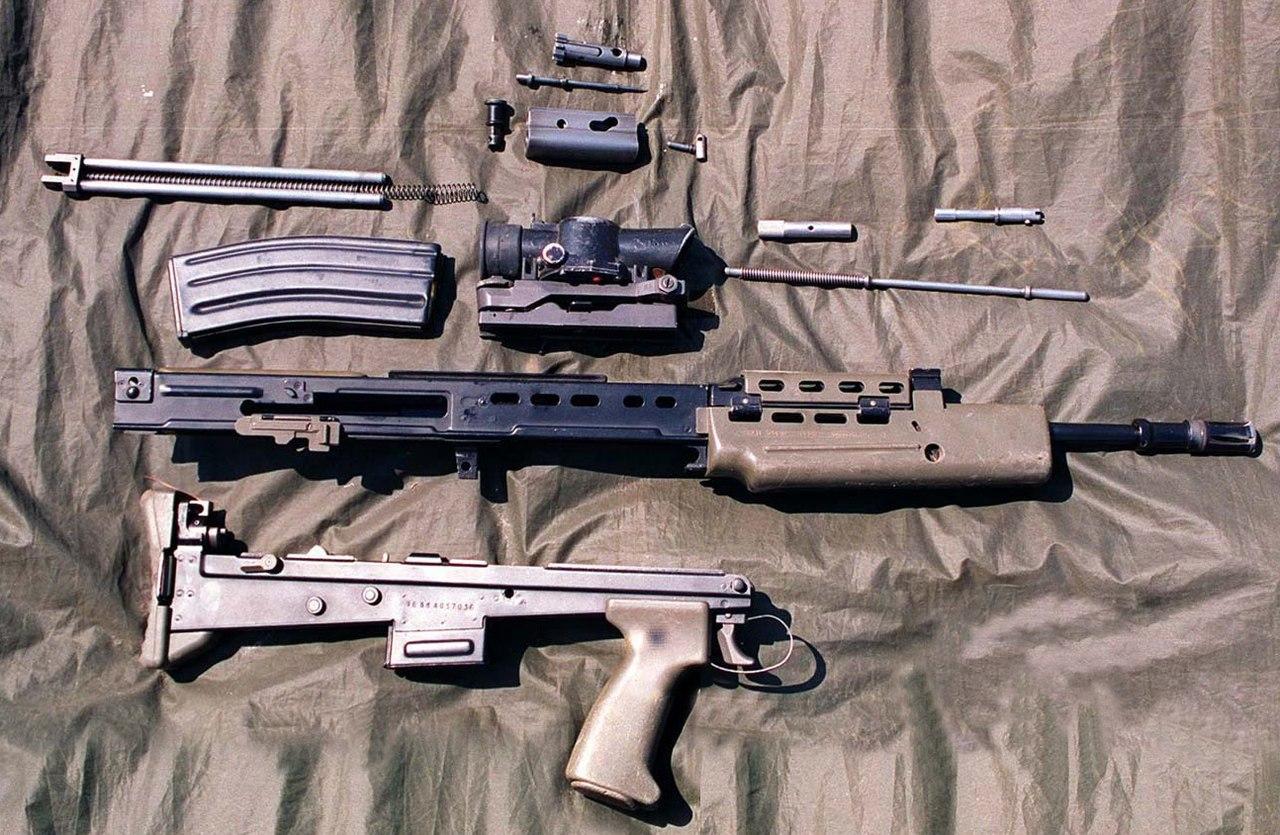
The standard sight is the SUIT or Sight Unit, Infantry, Trilux, a short optical telescope containing an illuminating source for shooting in low light. This is a sealed unit, and adjustments for elevation and windage are carried out on its supporting bracket. On top of the SUIT unit, there are emergency iron sights; there are no sights on the body of the rifle, though a foresight blade and a two-aperture backsight can be fitted if desired.
The Enfield L85A1 rifle is extremely easy to shoot, popular with soldiers, and very accurate; despite its compactness, the bullpup layout ensures a reasonable barrel length. The latest models will be rifled to suit the new SS109 NATO standard 5.56 mm bullet. There is also a heavy-barreled version with a bipod intended as the squad automatic weapon; this rejoices in the name L86 Light Support Weapon.
User review
The Enfield L85A1 initially gained a poor reputation amongst British soldiers as unreliable and fragile; a fact picked up by the UK media, entertainment industry, and members of the House of Lords. Chris Ryan regarded the L85A1 as being “poor-quality, unreliable weapons at the best of times, prone to stoppages, and it seemed pretty tough to have to rely on them,” while his fellow Bravo Two Zero patrol member Andy McNab said that:
The Regiment tried SA80s in jungle training when they came out and found it not best suited to its requirements. […] If rifles were cars, instead of going for a Ford Sierra 4×4 – good, reliable, tested, and enjoyed by the people who drive them — in the SA80 the Army went for a Rolls-Royce. But at the stage when it was first brought into service, it was still a prototype Rolls-Royce, and there were plenty of teething problems.
— Andy McNab, 1993

Technical specifications: Enfield L85A1
| Manufacturer: | Royal Small Arms Factory, Nottingham, England |
| Designed: | the 1970s–1980s |
| Service: | 1985-present |
| Type: | gas-operated, selective fire |
| Caliber: | 5.56 mm (.223) |
| Barrel: | 20.4 in (518 mm) |
| Weight (empty): | 8.20 lbs (3.72 kg) |
| Effective firing range: | 300-400m rapid-fire; 600m section fire |
| Rate of fire: | 610-775 rounds per minute |
| Magazine capacity: | 30-round detachable STANAG magazine |
